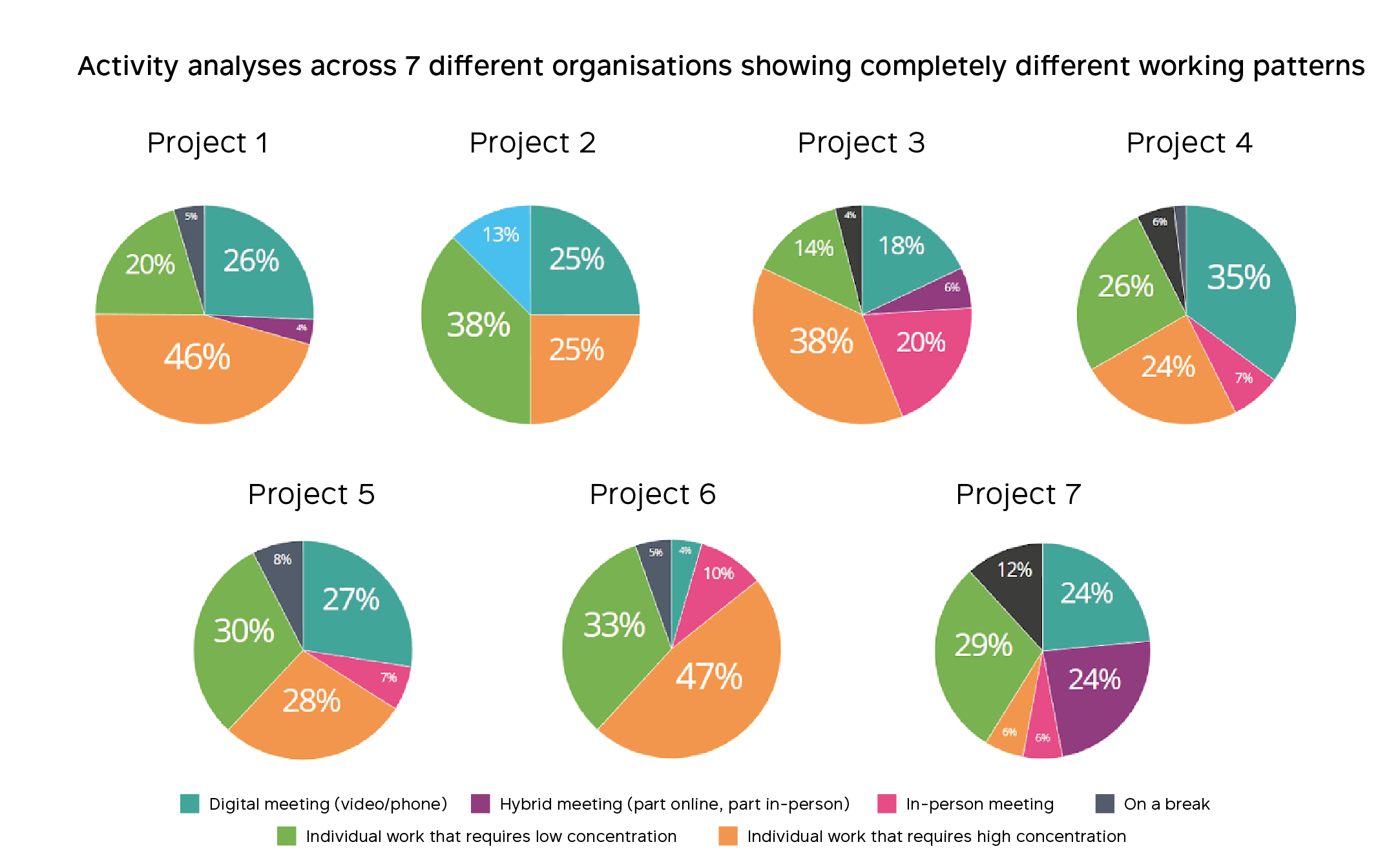When scrolling through the internet you hear many experts yelling advice like “There are too few high-concentration spaces”. Long articles about how “Open floor plans will never work”, or “Why we all should work remotely”. People talk about their perspective of work, and most people only visit a few workplaces in their life. However, there are many types of organisations that need to do different types of work. When someone writes an article about workplaces, they tend to talk from their perspective but haven’t included the variety of all the different organisations there are. An open floor plan does definitely not work for psychiatrists, while a closed floor plan does definitely not work for a co-creative design company.
Through generalisation, you lose the value of variation, meaning that the same solution doesn’t always work everywhere. Even in scientific articles, you find this issue. Because in science it’s about averages. So, a scientific conclusion might be that “working remotely is effective on average”. However, there are several cases where it’s not effective and on-sight attendance is warranted. Again, there is variation in the data that is important and contextually determined. Applying general advice and implementing popular solutions doesn’t always work. But using data differently, however, can help you a lot.
The workplace needs to differ
At Measuremen, we observe many workplaces and thus also see major differences between them. From design companies with open floor plans with fabrics all across the room to marketing agencies with closed grey cubicles, we’ve seen it all. Below we plotted seven different organisations we’ve performed a project with using Habital®. You quickly see the diversity in how people are using the office across the projects.

As a scientist, I do now have a tendency to say: that high-concentration work is on average the most popular activity, which implies that you need at least 40% high concentration spaces. But that wouldn’t help anybody. In some organisations (like in project 7) people hardly perform this activity. If you implemented such an office while people actually need different spaces, you have a big problem.
How spaces influence work
Because it’s important to realise how the office space influences the activities of people and how they feel. In fact, we saw a strong relationship between the activities that people perform, and the spaces there are, but also with the psychological needs of people. For example, one organisation we worked for, had closed offices, and their employees performed a lot of individual work, and also had a high psychological need for autonomy and low need for relatedness. While a completely different organisation had an open floor plan, where the employees performed a lot of collaborative work, but had a low need for autonomy and a high need for relatedness. It matched perfectly. We don’t know what’s “the chicken and the egg” (what caused what), but it’s clear; bricks, computers and desks do highly affect your work.
Having an effective office
To have an effective office, you need to understand what people (need to) do at work. You shouldn’t look at general trends but reflect on your own organisation. Of course, looking at “benchmark data” from similar organisations could help you, but primarily focus on your own organisation. What kind of work are your employees doing at the office? And does that match with the office spaces you currently have? We observe frequent mismatches between this; people doing individual work in meeting spaces or people collaborating in focus spaces. Of course, it’s difficult to make it perfect, and spaces can have multiple use purposes, but there are chances things might interfere with a large mismatch space-activity mismatch.



